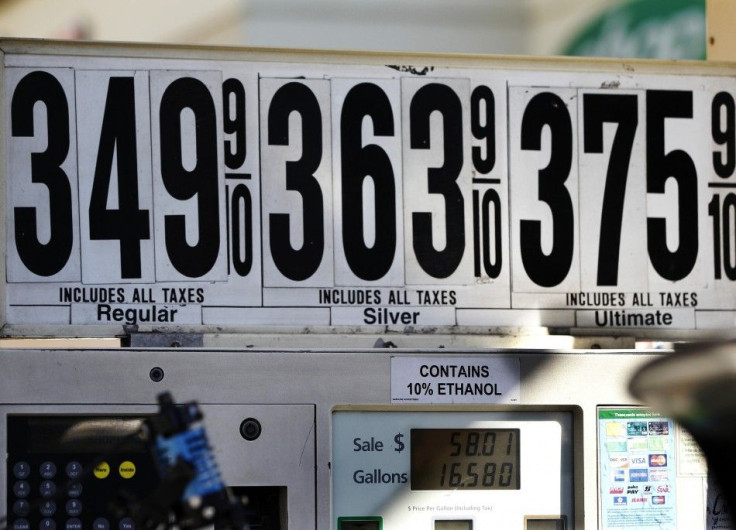Gas Prices Drop: Down 21 Cents in a Month and Likely to Fall Further
ANALYSIS

What's the lowdown on gasoline prices for U.S. motorists? By and large the story remains encouraging -- a seven-cent drop in prices in a week, and a roughly 21-cent plunge from a month ago, in early September.
What's more, the outlook for a continued decline in pump prices, following a summer of sky-high prices, looks good.
The average U.S. price of regular unleaded gasoline dipped another penny Monday to $3.45 per gallon, according to data compiled by gasbuddy.com.
What's more, retail gasoline prices are down about 55 cents since peaking in May, at which time the average price for regular unleaded pushed $4 per gallon, with many high-cost cities experiencing a gas price well above $4.
Sees $3.25-$3.50 Gas for 2011
It's great to see gasoline prices falling, but at the same time, prices a year ago were nearly 75 cents less per gallon, Patrick DeHaan, Senior Petroleum Analyst at gasbuddy.com told The Decatur Tribune. The good news is that over the upcoming weeks, there will continue to be factors that could put more downward pressure on oil and gasoline prices. I continue to expect that average gasoline prices will bounce between $3.25-$3.50 for much of the rest of 2011.
However, if U.S. consumers aren't ready to throw a party yet regarding the recent downward trek in gas prices, that's understandable, given that gas prices are still, as noted, roughly 75 cents, or 27 percent higher than a year ago, in October 2010, when regular unleaded averaged $2.73 per gallon, nationally.
What's triggered the recent decline in gasoline prices? Three factors. Libya's Moammar Gadafhi has been driven from power by the National Transitional Council opposition group/fighting force, and even though a considerable portion of Libya's oil infrastructure was damaged during its brief civil war, oil traders interpreted the takeover by the opposition group has a sign of relative stability -- i.e. that the worst is over for Libya, from an oil production/export standpoint. That's helped push oil prices down below $80 from $100 in August. Oil traded Monday at midday, down $1.46 to $77.74 per barrel.
Second, the U.S. economy's growth rate has slowed in the past six months, with subpar job growth, and that's kept a lid on gasoline demand, something that tends to lower gas prices.
Third, a seasonal factor is at work: the summer driving season ended on Labor Day. Those Americans with family budgets large enough to take a vacation tend to complete them by Labor Day, resulting in a reduction in gasoline sales.
That decline in demand should lower gas prices even more, as gas stations and convenience stores cut prices to attract more buyers to help maintain customer traffic levels as the autumn progresses.
What's more, energy analysts are quick to point out that there's no shortage of oil in the world -- inventories in the U.S., for example, remain relatively high.
Energy/Economic Analysis: The gas price drop isn't huge good news, but given the current sluggish economy, Americans will take any break on living expenses or costs they can get.
Assuming there isn't a supply disruption at another major oil producer, such as Nigeria, Venezuela or Mexico, and assuming the U.S.'s refinery system isn't shut down for an extended period by a hurricane/tropical storm in the Gulf of Mexico, gas prices should continue to trek lower this autumn.
That's said, motorists will have to remain patient: it's true - gas stations raise prices quickly and lower prices slowly. And the reason is profit maximization: after the price of gasoline declines at the wholesale level, gas stations attempt to hang on to the higher profit realized from the spread between wholesale and retail prices for as long as they can -- usually until competitors' gasoline prices force them to lower the price.
© Copyright IBTimes 2024. All rights reserved.





















